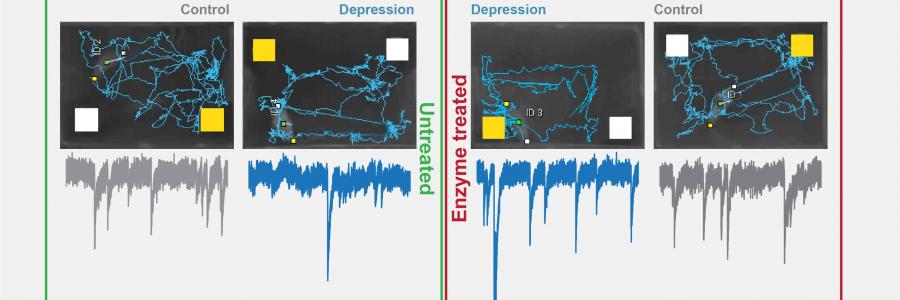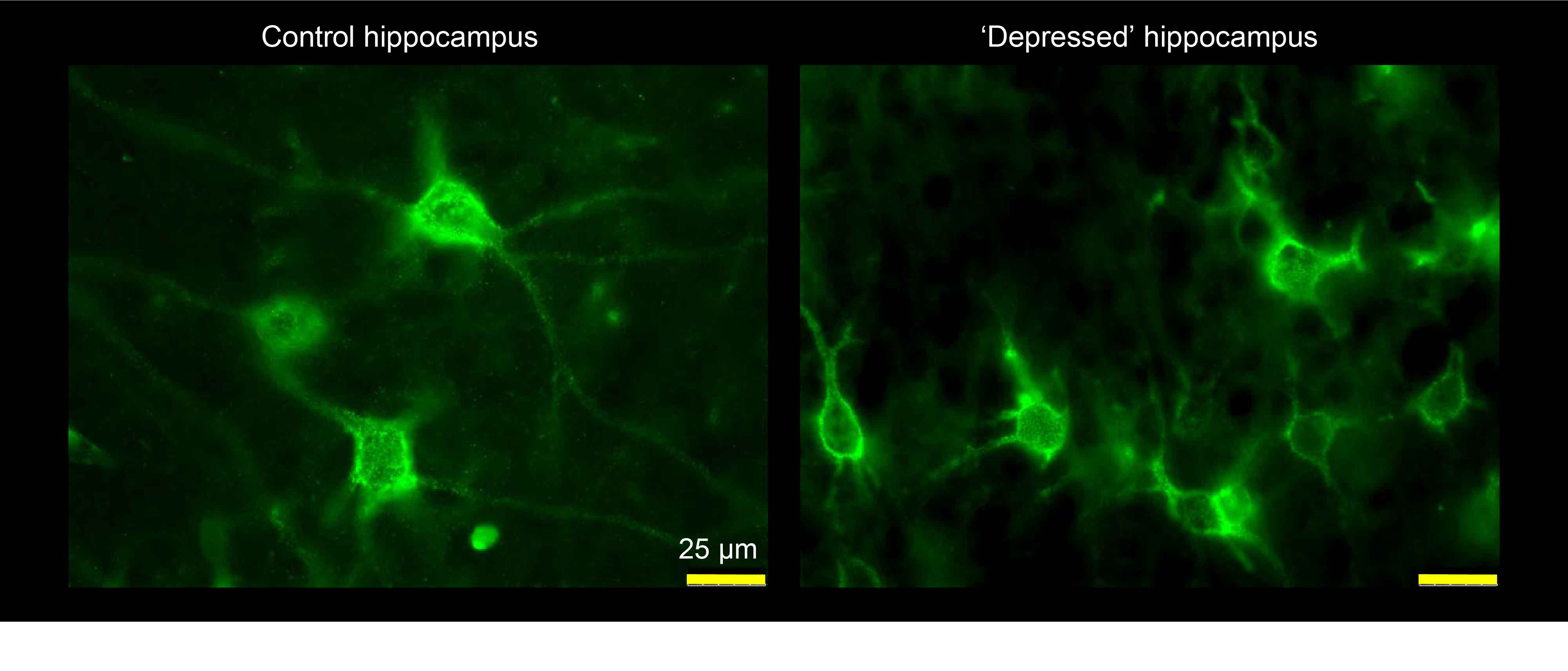
MCN post-doc Danai Riga and PIs Sabine Spijker and Guus Smit present first evidence for a molecular mechanism for the cognitive deficits in depression using a rat model in the 20 December issue of Science Translational Medicine.
Depression and cognitive deficits
Apart from the well-known problems depressed patients have with mood and anhedonia (affective deficits), a yet unexplored area is the cognitive deficits associated with this disease, including difficulties in memory recall. “Our interest was specifically to search for molecular mechanisms underlying these cognitive symptoms, in order to find new leads for potential therapies”, explains senior author prof. Sabine Spijker. “In order to capture this long-lasting state of depression, we used a unique animal model that recapitulates many of the behavioral symptoms displayed in depression. It is important to note that this model is different from those generally used as the behavioral and cellular effects are lasting, but the stress that induced these effects is not chronic.”
Sugar-containing proteins in the hippocampus
The brain region well-known for creating memories is the hippocampus, and depressed patients have a smaller hippocampus. “Previously we showed already that rats of this depression model have less capacity to make new neurons in the hippocampus. Therefore, we started our search there”, says Sabine Spijker. The authors performed a large screening for proteins differentially expressed in the synapses, the points of communication of neurons, between rats of the depression model and controls. In addition, they took along groups of rats that were treated with the antidepressant drug imipramine. “The number of samples we analyzed was huge, but the set-up was well thought of, and really dedicated to find proteins that were underlying the antidepressant rescue of depression-induced memory deficits”, adds Prof. Guus Smit. And so they found a set of proteins regulated by depression and rescued by antidepressant treatment that are on the outside of neurons, forming a net-like structure by means of the many sugars on these proteins; the extracellular matrix. “Basically a so-called ‘suikerspin’”, explains first author Danai Riga, “a typical Dutch candy, how appropriate! But really, we were quite astonished to find those set of proteins; not only at the synapses, but also around specific inhibitory neurons in the hippocampus [see figure; this extracellular matrix is labelled using immunofluorescent techniques (green)]. A finding that we have replicated several times ever since.”

Causal evidence for role extracellular matrix in this depression model
Then the real question was whether all the deficits observed, namely at the level of memory, and the level cellular and synaptic communication were causally related to this increase in extracellular matrix proteins. “Sabine asked me to put an enzyme that breaks down this matrix in the hippocampus of the animals that showed this chronic depression state”, says Riga, “honestly, I did not believe this would ever work. But it sure did. “The animals that received this enzyme and that were 2 weeks before not able to do their memory test, were now doing fine. They also showed proper cellular and synaptic communication in their hippocampus after their treatment, and the increase in extracellular matrix was gone.” The question that remains is whether this could be a new treatment for depressed patients having these cognitive deficits. “Now, of course we do not want to put this enzyme straight in the head of depressed patients based on these result; that would be far too dangerous”, explains Spijker. “Yet, it gives us an interesting new target to work on, and a mechanism that went unnoticed before. In that respect, it is a real break-through, and we are happy that our work got published for this same reason in the ‘translational’ branch of Science, as this is very interesting from a therapeutic perspective. We do hope that this can fuel new research into finding treatment for cognitive deficits in depression”.
Hippocampal extracellular matrix alterations contribute to cognitive impairment associated with a chronic depressive-like state in rats can be found here.
For reprints, see our Publications page.
Science Translational Medicine 20 Dec 2017: Vol. 9, Issue 421, eaai8753
DOI: 10.1126/scitranslmed.aai8753